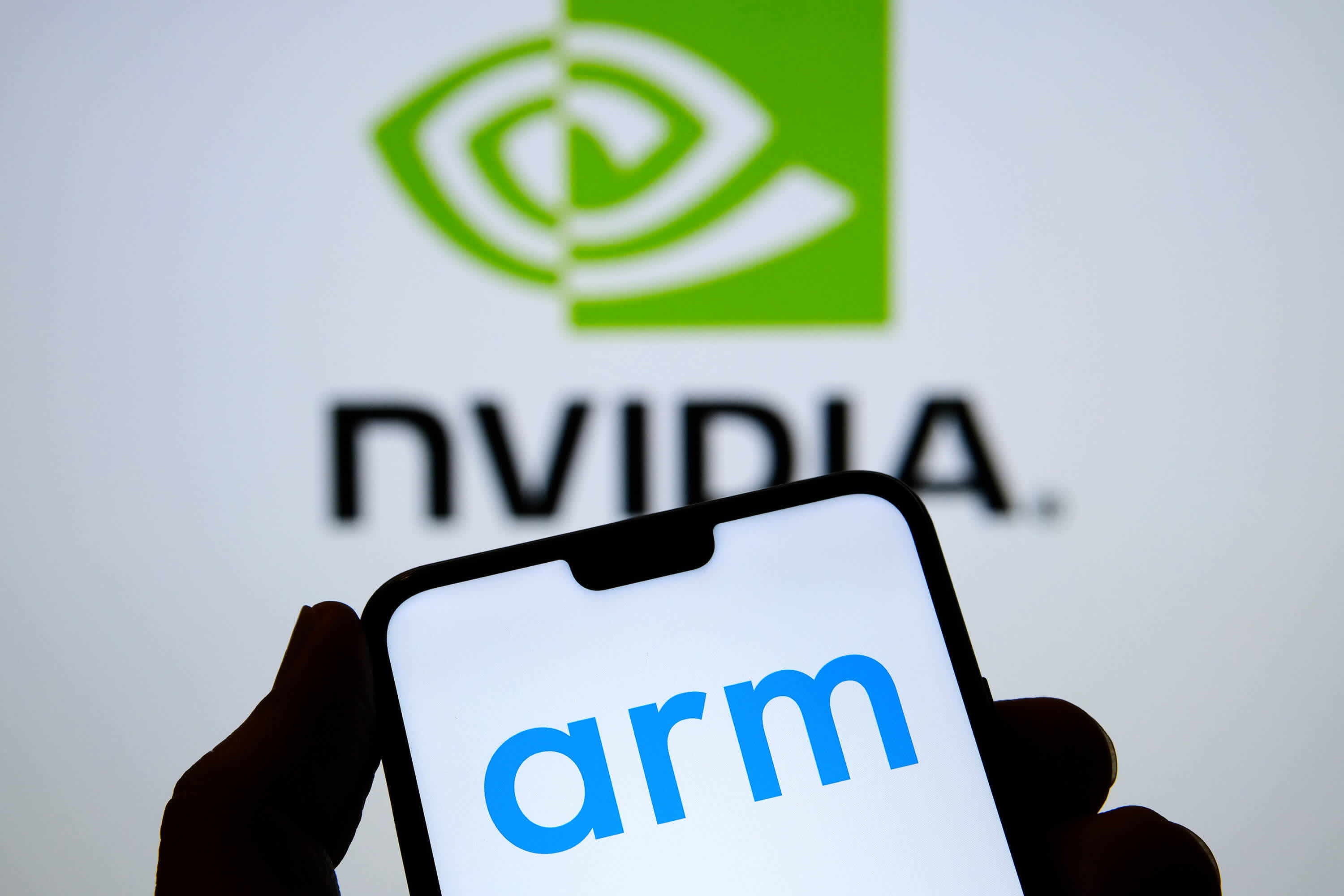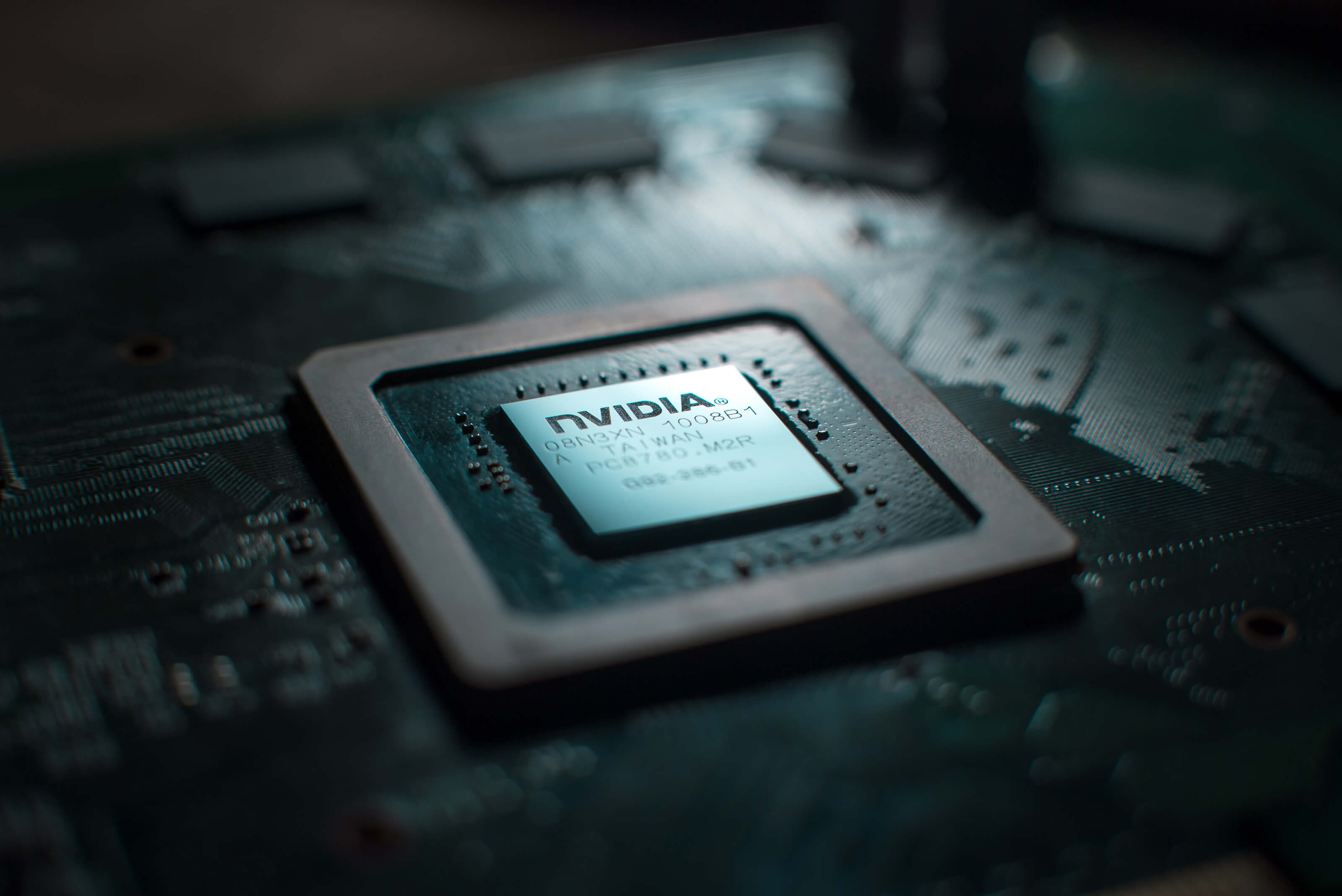Why it matters: Wow. That's about all you can say to what could prove to be one of the biggest semiconductor purchases in the multi-decade history of the chip business. The amazing irony is that this $40 billion dollar deal doesn't involve any chips at all.
The news that was announced on what proved to be a rather eventful Sunday evening is that GPU giant and AI leader Nvidia is planning to acquire the IP assets and business of Cambridge, UK-based Arm from Softbank. Though few people truly understand or appreciate what Arm does or the influence it has, the simple fact is that it arguably owns one of the pre-eminent positions in the tech world.
Put simply, almost every single smartphone currently being used or being sold in the world uses an Arm-based CPU: Apple, Qualcomm, Samsung, Huawei, and MediaTek among others all license the CPU architectures – and in some cases GPU, AI co-processors and other components – that Arm's engineers and designers create. Smartphone makers, in turn, use those designs to create chips that are then integrated into the devices we use.
Must read: How ARM Came to Dominate the Mobile Market
Apple and a few others have what's called an architectural license that allows them to take the basic design of the CPU and then customize around it.
Many others, including Qualcomm, take the design as it is and then add other components of either their own or Arm's design in order to build, for instance, Qualcomm's very popular Snapdragon line of SoCs (system on chips). In other words, it's Arm that's arguably been driving the incredible growth and sophistication of smartphone hardware and architecture for roughly the past 15 years or so.
The company's influence, however, extends way beyond smartphones. Most recently, Arm has also been making significant inroads in the data center business with its Neo brand of server-focused IP. Oh, and there is the fact that Apple just announced that it was going to transition the Mac off of x86-based CPU architectures from the likes of Intel and move entirely to its own custom CPUs based on---you guessed it---Arm-based CPU architectures.
Toss in the fledgling but growing Windows on Arm-based PC business---as exemplified by Microsoft's Surface ProX---along with a huge, but little recognized presence in IoT devices, and you can see that, to some degree or another, Arm's influence extends to just about every person on the planet.

As a result, it's not surprising to see Nvidia's interest in Arm. Indeed, rumors started flying several months ago that Nvidia could be a potential purchaser of Arm, but many---myself included---brushed it off as unrealistic. Yet, here we are. My concerns, as well as those of many other industry observers, are that it would be very challenging for a company with a defined position within the industry to maintain the Switzerland-like neutrality that Arm has been able to offer.
When Softbank purchased Arm about 4 years ago for nearly $32 billion, there were even a few concerns raised then---because of the incredibly influential role that Arm plays---but those concerns were quickly tossed aside when people realized Softbank didn't have any vested interests in specific platforms or tech hardware companies.
That's not the case for Nvidia, however, and that's why a number of questions are being raised about the challenges expected to come from Nvidia's competitors, and even non-competing Arm customers, on the regulatory front. Nvidia has said that the purchase process could extend to as long as 18 months because of the approvals that would need to occur in multiple geographies across the world.
If you look at the business that each company is currently in, however, there really isn't much overlap. Nvidia has no presence in the smartphone market and, despite multiple efforts in the past, no major CPU architecture of any kind. In fact, ironically, Nvidia's actually an Arm licensee. Arm does have GPU and NPU (neural processing unit---used for AI acceleration) IP and chip designs, and even some that theoretically compete with Nvidia in the data center market. Arm's current impact in those areas is tiny, however, and that market is evolving at an extremely fast pace. Most importantly, Nvidia sells actual chips, and Arm sells chip IP designs. Those are very different and non-overlapping business models.
The level of power and influence this combination could create is likely to give some big tech companies pause---especially those who compete directly with Nvidia (notably Intel and AMD) and even those who have been loyal Arm licensees---but may have potential issues with Nvidia (notably Apple and Qualcomm)
The biggest issues will likely come down to the competitive threats and strategic concerns that the combination of Nvidia and Arm will create. The truth is, this acquisition could be a brilliant move for Nvidia, because it would extend the company's level of influence and exposure to many areas of the tech market that it has never been able to reach. Nvidia CEO Jensen Huang specifically called out how the combination would give the company the ability to extend its AI efforts to a significantly broader range of devices. This is important to consider because, while most people think of Nvidia primarily as a GPU chip maker, Huang sees the company as having a much wider purview---that it is really more of an AI enabling company, which happens to make chips that in turn make AI faster and more efficient to do. In that light, the Arm acquisition makes complete sense. Plus, it allows the company to finally scratch the CPU itch that it's had (and Huang) for a very long time.
The level of power and influence this combination could create is likely to give some big tech companies pause---especially those who compete directly with Nvidia (notably Intel and AMD) and even those who have been loyal Arm licensees---but may have potential issues with Nvidia (notably Apple and Qualcomm). While I really don't think Nvidia's goal was to go after Intel---after all, the companies have been strong partners for years---there's no doubt that this deal could have a big impact long-term on Intel's business in several sectors. As a result, I wouldn't be the least bit surprised to see Intel oppose the proposed sale.
Largest tech deals in history
| Company | Acquisition | Price | Year |
| Dell | EMC | $64 billion | 2015 |
| Nvidia | Arm | $40 billion | 2020 |
| Avago | Broadcom | $37 billion | 2015 |
| IBM | Red Hat | $34 billion | 2018 |
| Softbank | ARM | $31.4 billion | 2016 |
| Microsoft | $26.2 billion | 2016 |
In Apple's case, given that it just announced a long-term switch to Arm-based CPUs for the Mac, but has not been using Nvidia GPUs for many years, it will be interesting to see if Apple shows any signs of backtracking on its strategic decision. I doubt it---especially because Apple heavily customizes its Arm-based A line of CPUs for iPhones and iPads and will likely do the same for its Mac-specific Arm-based chips---but it will certainly be interesting to watch.
Geopolitically, the move could be a big challenge for an already struggling China semiconductor market. At the same time, Arm had already started limiting its work with Huawei's HiSilicon semiconductor branch in the middle of last year, so the fact that Arm could be owned by a US company wouldn't seem to make a big change (though, politically these days, anything could happen). Frankly, a bigger issue could be the UK itself. Arm is considered the crown jewel of the UK tech industry, so its government is very sensitive to the appearance of selling out to other countries. Given that Arm already sold to Japan-based Softbank in 2016, however, as well as Nvidia's smart and shrewd move to build a significant AI research center in Cambridge, those concerns likely won't last long.
From a technology perspective, there are a few other interesting issues to consider. First, many have argued that this purchase could push Arm licensees toward RISC-V, an open source IP chip architecture that many see as a potential challenger to Arm. The truth is, however, most of RISC-V's success has been at the low-power microcontroller end of Arm's business, and it really does not pose any significant threat to the higher-power Arm designs used for smartphones, PCs, and servers. Over time, the threat could grow, but it's likely a long way off.
There are many very interesting new developments, in areas like automotive, smart home, robotics, industrial and others, that could emerge from the combined mind-power and technical abilities of an Nvidia-Arm combination.
Another interesting challenge to consider would be the potential integration of technologies between the two companies. Specifically, Arm has made its name creating CPU (and GPU) designs that are incredibly power efficient and perform very well in battery-powered or other power constrained environments. Nvidia's GPUs, on the other hand, well, let's just say aren't generally known as power-sippers. In fact, it's not unusual for them to require significantly more power than other elements of a PC or server.
Of course, over time, it would be great to see Arm's proficiency in power conservation transferred over to GPU designs, just as it would be great to see Nvidia's prowess in graphics and AI acceleration added to Arm's existing offerings. In fact, it is these types of promises that make this potential combination appealing on many levels. There are many very interesting new developments, in areas like automotive, smart home, robotics, industrial and others, that could emerge from the combined mind-power and technical abilities of an Nvidia-Arm combination.
At the same time, there is a very real risk to the long-term trust-based business model that Arm has been able to create, if Nvidia starts to intervene too much. Nvidia clearly seems to understand these issues and has vowed to maintain Arm as an independent, UK-based company that will continue to honor its unique IP-based business model. If it doesn't, Arm could lose the huge range of licensing customers it now has, causing serious damage to Arm's overall business.
Ultimately, it's going to be a question of balance, trust, and intelligent leveraging of the assets that each company can bring to the table. No doubt, there will be serious questions from both customers and competitors---as there should be in a potential merger of this importance. Nevertheless, the potential new upsides and opportunities this merger could create, not just for the combined entity but for the tech industry as a whole, seem too compelling to pass up. It might not be an easy or necessarily perfectly straight path ahead, but it sure seems like a big step forward into an exciting future.
Bob O'Donnell is the founder and chief analyst of TECHnalysis Research, LLC a technology consulting firm that provides strategic consulting and market research services to the technology industry and professional financial community. You can follow him on Twitter @bobodtech.
